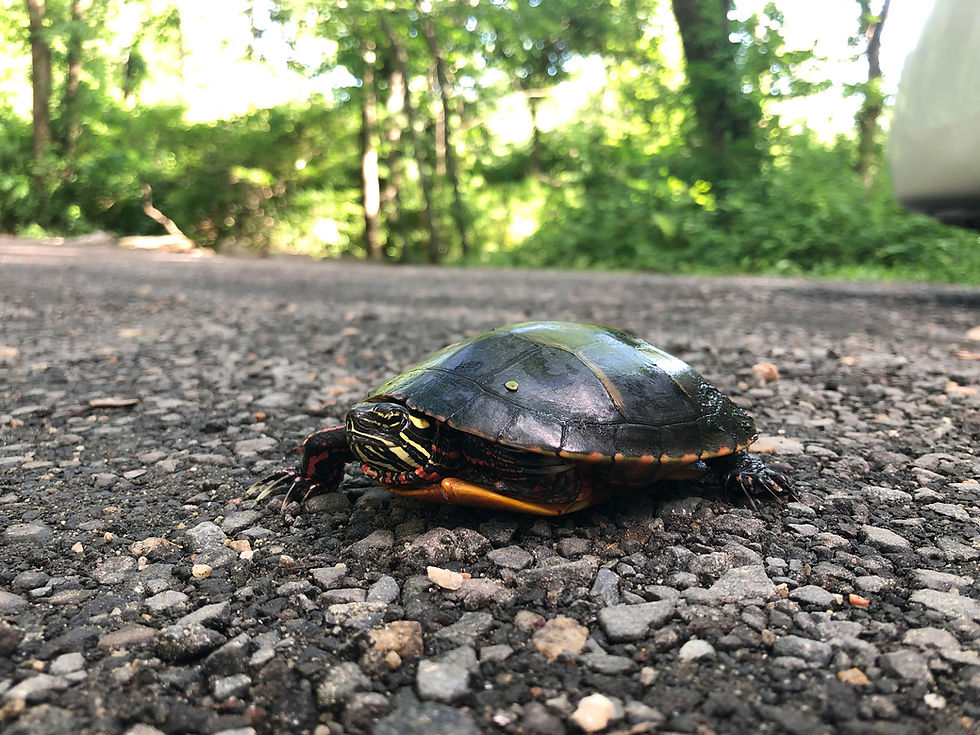Shedding Light on Nocturnal Insects

By Tommy McCarthy, Environmental Educator
With the lush green days of summer being nearly upon us, the life cycles of countless insects have been resuming! Different species have overwintered in different ways - some as eggs, some as larvae, and some as adults. Some, like monarch butterflies, have even made migratory journeys. In the United States, there are around 91,000 insect species that humans have discovered and named. On top of that huge number, scientists estimate that there are another 73,000 or so that have not yet been described - which might surprise you since we tend to think mostly of the oceans when it comes to undiscovered life on our planet. We may not pay too much attention to them, but insects are important, interesting, and fun to learn about - and summer is a great time to discover some of them for yourself!
Of those 91,000 known insect species in the US, close to 12,000 of them belong to the order Lepidoptera (moths and butterflies). Over 11,000 of those species are moths, compared to the 750+ species of butterflies. We mostly learn about butterflies as the charismatic pollinators, but many moths are strikingly beautiful, and also contribute to pollination! It makes sense that we don’t think as much about moths given their typically nocturnal behavior, but there are ways to see species that you would otherwise rarely get a chance to look at. One way that you might ordinarily get a chance to see a cool moth is by accidentally leaving an outside light on. Moths and other nocturnal insects often get lured in by lights at nighttime because of how they navigate. Without artificial light sources, the sky is the brightest light source, and insects will use this to orient themselves by flying parallel to the sky with their backs facing upwards. A light bulb left on at night will trick this instinct, causing the insects to fly in circles around the light and eventually land nearby.
While we usually attract insects in this way by accident, and we should be mindful about leaving lights on at night so we don’t constantly disrupt the normal behavior of nocturnal insects, it is also a great way for budding enthusiasts to see a diverse cast of nocturnal species up close! Light-sheeting is the practice of hanging up a stretched-flat white sheet and putting a light bulb in front of it in order to attract insects to visit the illuminated sheet. Many folks recommend using a UV blacklight bulb, as moths are sensitive to light that is on the UV spectrum, though there are more specialized lights used by professional entomologists. Regardless of what you use, this is an incredible way to introduce yourself to more insect species! It’s wonderful because you can set it up and then periodically go out and check on what insects have come and landed on the sheet.
Paired with phone photography, field guides, and the iNaturalist app, you now have a fun and educational scientific hobby that gathers data on all the species you end up encountering and uploading photos of. Getting a field guide to moths is a great way to start, as they have information on what time of year you would expect to see certain species and what their host plants are. There could be mind blowingly beautiful moths living right under your nose, so give it a try one warm summer night! Giant silkworm moths like the Luna, Cecropia, and Polyphemus moth can all be observed in Connecticut along with many others that exhibit otherworldly beauty, plus a whole host of other insects that you’ll learn about along the way. You never know what will stop by, you just have to give it a try!





